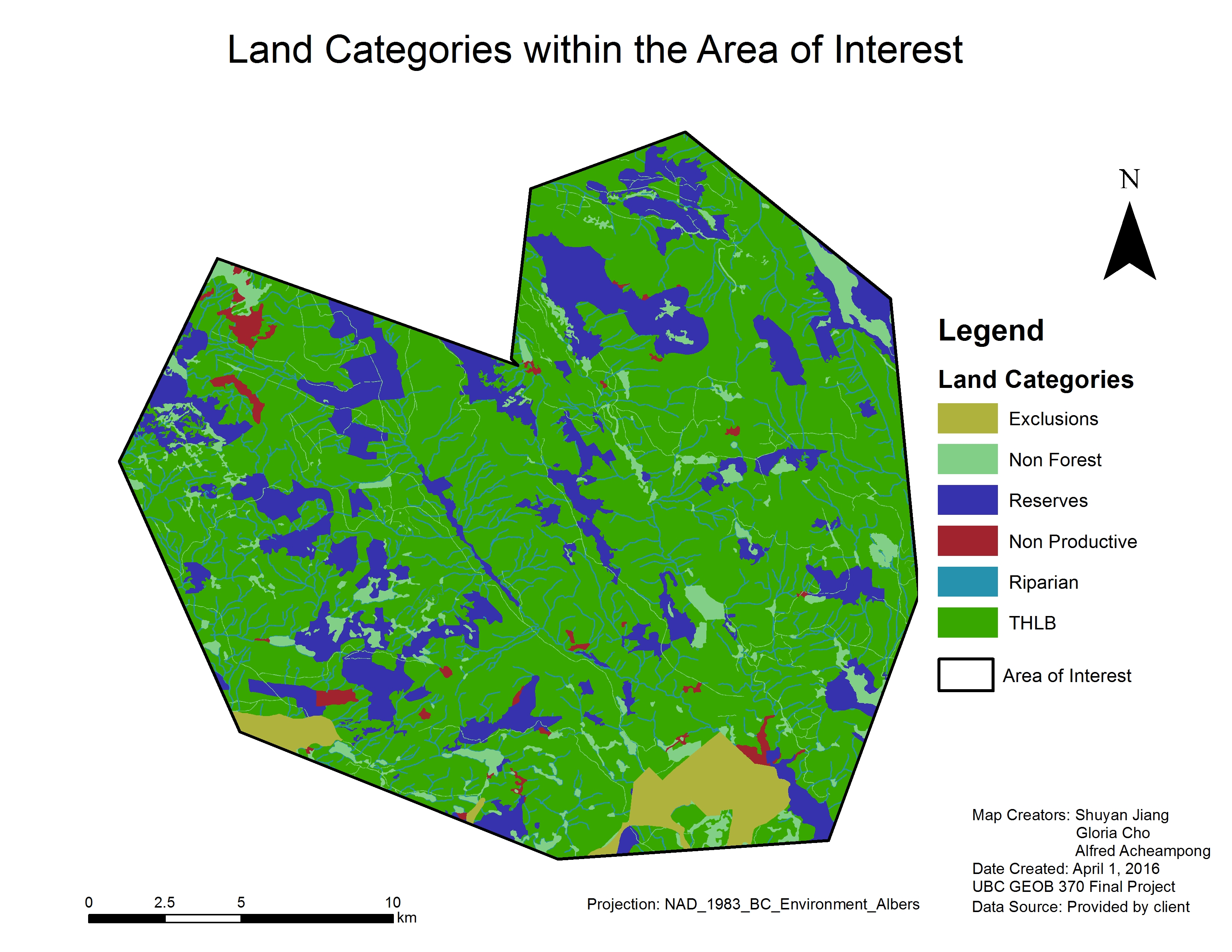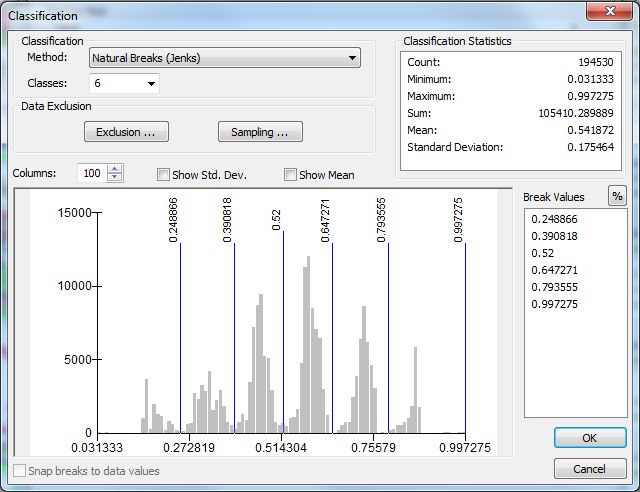This page describes the methods used in this project. Data was obtained from our client.
We have several concerns when deciding on the harvestable area, which are either directly or indirectly related to the sustainability of the environment. The concerns are:
- Water-resource protection
- Wildlife habitat protection
- Old growth protection
- Recreational areas (e.g. provincial parks, hiking trails)
For more detail please refer to our Concerns Page
After considering all of the concerns, the following map shows the timber harvest land base (THLB) where we can actually harvest timber.

We have four criteria in our analysis, which are discussed in the Criteria page. The four criteria are:
- Species
- Age
- Slope
- Proximity to roads
After deciding on the criteria and assigning values respectively, the layers were converted to raster layers (if they were in vector layers initially). Then we normalized the four raster layers because we want to be able to compare between them, so values will be recalculated to fit in a range from 0 to 1. We used Fuzzy Membership — linear, where the highest value is assigned to 1, and the lowest value assigned to 0.
After that, we did a Multi-Criteria Evaluation which allowed us to calculate the weight of each criteria. For more information, please refer to the MCE page. The result of the weight calculation was:
- Species: 0.48
- Age: 0.16
- Slope: 0.09
- Proximity to roads: 0.27
We input these values when using the Weighted Sum tool under Spatial Analyst, and got our results in a form of an interpolated raster layer.
In order to make a vector layer from this interpolated raster, we first have to reclass the raster into groups, then convert to polygons according to the classified groups.

According to this histogram of the interpolated raster, there are 6 nodes, so we have assigned 6 classes (groups) during reclassification. The classification method used was Natural Breaks because it reduced the variance within classes and maximized the variance between classes.